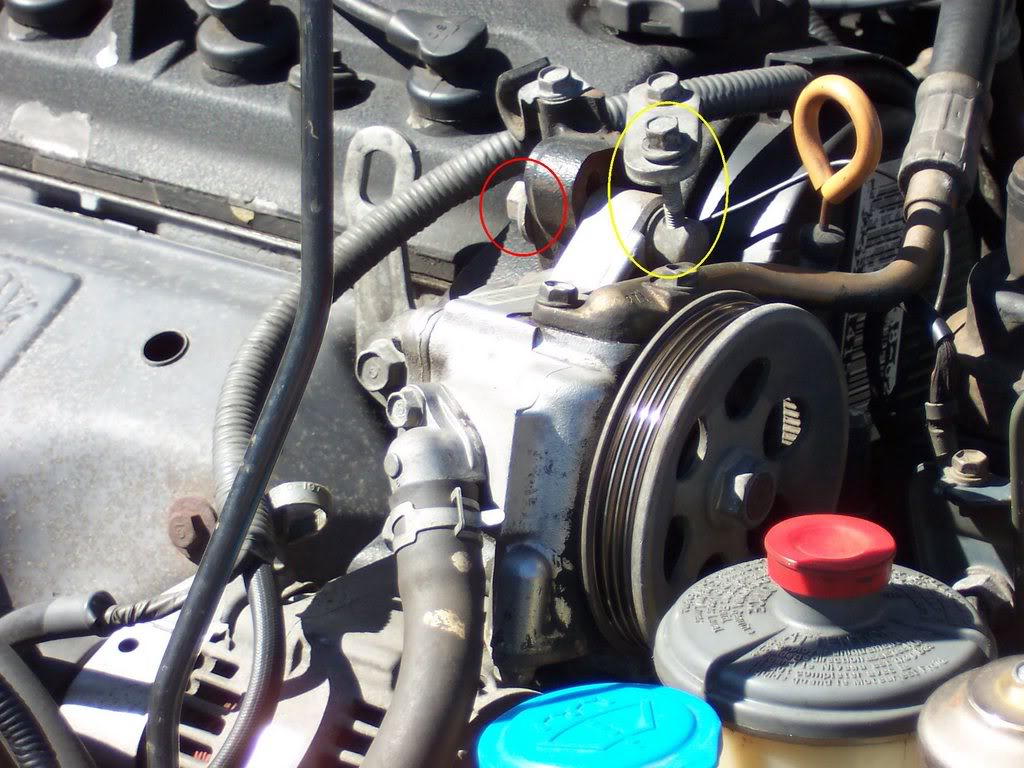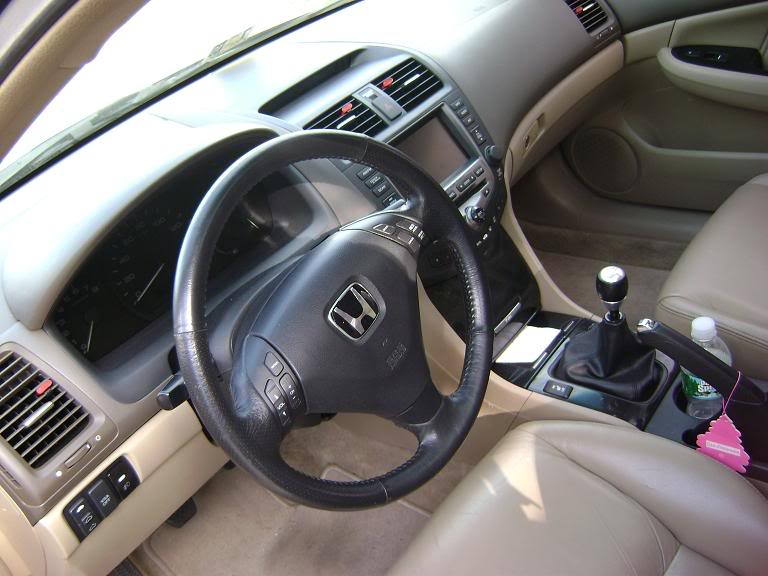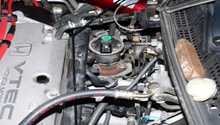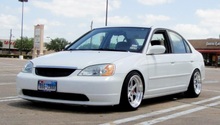Honda Civic: Why is My Steering Wheel Hard to Turn After Cold Start?
This handy, step-by-step guide will help you diagnose and fix the problem so that the simple act of driving around doesn't turn into an impromptu, upper body workout.
This article applies to the Honda Civic/Del Sol (1992-2000).
Have you noticed that suddenly the simple act of turning the steering wheel has become more difficult following a cold start? If so, there are a number of possible causes. Sometimes the culprit is as simple as power steering fluid or a slipping belt, but this kind of symptom could also mean a bad pump or a problem with worn or loose steering components. We're going to run down several possible causes and help you diagnose what might be causing your particular problem.

Materials Needed
- Jack and jack stands
- Funnel and length of hose
- Socket wrench
- Screwdriver
- An assistant
Step 1 – Check your power steering fluid
Power steering fluid thickens in cold weather.
If you are lucky enough to live where the winters get very cold, this is simply one of the many joys of winter. Power steering fluid gets thicker in the cold, especially in extreme cold, which leads to a more difficult time turning the wheel. Letting the car warm up to operating temperature helps, and it's a good idea to check the fluid and change if needed as well. Also, make sure the fluid is filled up to the fill line, as a lack of fluid can make the steering wheel more difficult to turn as well.
(Related Article: Honda Civic: How to Replace Power Steering Fluid - Honda-Tech.com)

If it's not cold outside or your power steering fluid is in good shape, move on to Step 2.
Step 2 – Check your power steering belt and pump
Your belt or pump could be going bad, or the belt might just be loose.
Take a good look at your power steering belt and make sure it is tightened properly. If the belt is cracked or damaged, replace it, especially if you hear a squeeling noise while turning. The same goes for a pump that is going bad. You will hear a loud squeeling noise when the wheel is turned in either direction, and eventually you will lose power steering completely when the pump goes out. While you are inspecting these parts, look for any leaks.

If your belt and pump and in good shape, move on to Step 3.
Step 3 – Inspect your steering assembly
You might have worn or loose components in your steering system.
Start the engine and have someone turn the steering wheel from side to side. Check for worn or loose components around the steering wheel column and steering assembly. Check the connecting arms at both ends of the assembly and around the mounting brackets. Worn or loose components in this area can produce a variety of noises and variances in the steering feel.

Related Discussions
- Hard to Turn Steering Wheel After Cold Start - Honda-Tech.com
- Loud Squeaking Noise When Turning Steering Wheel - Honda-Tech.com
- Power Steering Not Working When it's Cold Outside - Honda-Tech.com






